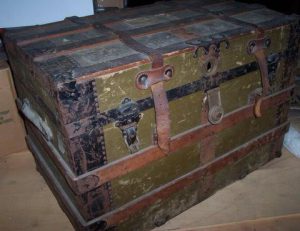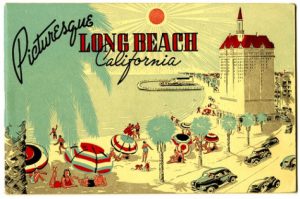 As one would imagine from the title, Roger Thompson’s most popular work (see my last post) is Sex in Middlesex, Popular Mores in a Massachusetts County, 1649-1699.[1] First, a few words on the differences between academic historians and genealogists. Academic historians are concerned with the “why” of history. They gather large samples of statistical information but usually skim over individual people. Genealogists work from the individual, but usually we leave the bigger picture to the historians while we move on to another ancestor. Continue reading Sex in Middlesex
As one would imagine from the title, Roger Thompson’s most popular work (see my last post) is Sex in Middlesex, Popular Mores in a Massachusetts County, 1649-1699.[1] First, a few words on the differences between academic historians and genealogists. Academic historians are concerned with the “why” of history. They gather large samples of statistical information but usually skim over individual people. Genealogists work from the individual, but usually we leave the bigger picture to the historians while we move on to another ancestor. Continue reading Sex in Middlesex
Monthly Archives: March 2017
Closed doors

Adoption records can be one of the most frustrating aspects of genealogical research. Still somewhat taboo in nature, the information they contain can be invaluable. These types of records are usually preceded by thick brick walls both factual and emotional. The process of looking for these records may also lead the researcher to confront many statutes reflecting closed door policies.
In the spring of 1915, my grandmother was placed for adoption by the Kansas Children’s Home. When my grandmother became of age, she located her biological mother and was able to build a brief bond.[i] By 1939, this bond had expired. My grandmother lived out her life with many questions about her natural parents, and never knew the name of her biological father. After my grandmother passed away, it became my quest to understand and learn everything I could about her adoption – before and after. Continue reading Closed doors
Gone to California
Over the course of many years exploring the history of my family, one man has always eluded me. His name was Andrew Taylor Tompkins, and he was my great-great-great-great-grandfather. Many of the facts of Andrew’s early life are known with certainty. He was born 17 February 1808 in Little Compton, Rhode Island, to Uriah Tompkins and Mary Taylor.[1] Andrew married Harriet Arnold Dillingham, the daughter of Captain Edward Dillingham (a descendant of Edward Dillingham, one of the early founders of Sandwich, Massachusetts) and Susannah Sherman, on 20 August 1834 in New Bedford, Massachusetts.[2] Andrew and Harriet had five children, the first of whom was Ellen Hughes (Tompkins) Luther, my ancestor. Continue reading Gone to California
Seeing double
Another example of correcting mistakes on my family charts came in the example of “seeing double,” where there appeared to be two generations with the exact same names, which can often, but not always, be a sign something is not quite right.
In this case my great-grandfather’s great-grandmother Abigail (Slade) Fitts (1777–1874) of Ashford, Connecticut, was identified as the daughter of Jonathan Slade and Anna Salisbury. Their ancestors were continued on charts 12 and 13. However on chart 12, Jonathan Slade is also identified as a son of Jonathan Slade and Anna Salisbury. Was this really true? In this case, no. Continue reading Seeing double
What’s left behind
 Facts can be so unsatisfying. Colorless (but critical) records of lives, people, places, and events, when facts are viewed in the context of heirlooms, memorabilia, or artifacts, things left behind by our ancestors, our past is better illuminated and gives us insight into older generations, providing a foundation for family stories. Readers of my posts on Vita Brevis will recognize my pursuit of and passion for those stories. Whether the facts give rise to the stories, or whether the stories begin by seeking the underlying facts, is something of a chicken-or-the-egg question, a fractal of genealogical research, repeating and replicating patterns of family interactions and history. Continue reading What’s left behind
Facts can be so unsatisfying. Colorless (but critical) records of lives, people, places, and events, when facts are viewed in the context of heirlooms, memorabilia, or artifacts, things left behind by our ancestors, our past is better illuminated and gives us insight into older generations, providing a foundation for family stories. Readers of my posts on Vita Brevis will recognize my pursuit of and passion for those stories. Whether the facts give rise to the stories, or whether the stories begin by seeking the underlying facts, is something of a chicken-or-the-egg question, a fractal of genealogical research, repeating and replicating patterns of family interactions and history. Continue reading What’s left behind
‘A very serious thing indeed!’
[Author’s note: This series, on Mrs. Gray’s reading habits, began here.]

61 Bowdoin Street, Boston, Sunday, 11 September 1864: A dull lowering day has settled into a steady rain – so we shall probably not get out to “The Pines”[2] tomorrow, as proposed, to dine – for which I am sorry. I want to go myself, and I want Sue [Shober][3] to see the place & house. I hear it is handsome and commodious enough within, to amply compensate its outward unsightliness – which is saying a good word for its accommodations certainly, as externally the house does not satisfy the eye at all. Continue reading ‘A very serious thing indeed!’
Mobility and migration
 The Great Migration to New England from 1620 through 1640 is the focal point of the Great Migration Study Project by Robert Charles Anderson that NEHGS has been publishing for more than twenty years, but there are also a number of lesser-known academic studies of interest to Great Migration descendants.
The Great Migration to New England from 1620 through 1640 is the focal point of the Great Migration Study Project by Robert Charles Anderson that NEHGS has been publishing for more than twenty years, but there are also a number of lesser-known academic studies of interest to Great Migration descendants.
Roger Thompson, “a retired university reader in American history at the University of East Anglia,” has written several very interesting books that I highly recommend. The first one that I picked up off the shelf today is his Mobility & Migration, East Anglian Founders of New England, 1629–1640,[1] which is a statistical examination of conditions behind the families that came from East Anglia during the Great Migration. Continue reading Mobility and migration
Common walls

More often than not our work in genealogy and family history leads us to more than one proverbial brick wall. No matter how hard we try, or with what tenacity we might pursue that much needed fact, vital record, or even secondary source material, it all seems to no avail. While there is no panacea to cover all the brick walls we encounter, there just might be a way to refocus attention on the task at hand, i.e., research, by looking at unrelated people, places, or things – in a familiar place. Continue reading Common walls
‘Unbroken primogeniture’

An entertaining story about an American man claiming to be the rightful “King of Wales,” and a claimant as well to the throne of Great Britain, made the rounds last week after Allan V. Evans of Colorado posted a lengthy claim to the Welsh throne, noting the “injustice of history” that kept him from the British throne, to which he is heir by an “unbroken primogeniture line…”
Agnatic primogeniture dates back to early France and is known as Salic Law, where succession is obtained through kinship through the male line only. On a few occasions in France the king was succeeded by a distant male-line cousin, even when the deceased king had surviving daughters or sisters who had male children. Continue reading ‘Unbroken primogeniture’
‘You must be from Minnesota’
 Before I began working at NEHGS in November 2015, I had a job where I interacted with between thirty and fifty different people every day. One of those people was a linguist, who, upon hearing me speak, said, “You aren’t from here.” She was right. As I’ve mentioned in previous posts, I grew up in northern New Hampshire and moved to Massachusetts in 2011.
Before I began working at NEHGS in November 2015, I had a job where I interacted with between thirty and fifty different people every day. One of those people was a linguist, who, upon hearing me speak, said, “You aren’t from here.” She was right. As I’ve mentioned in previous posts, I grew up in northern New Hampshire and moved to Massachusetts in 2011.
I said to her, “No, I’m not from Massachusetts. I’m a transplant.”
Her answer, oddly enough, was, “You must be from Minnesota.” Continue reading ‘You must be from Minnesota’

